#Articulata
Explore tagged Tumblr posts
Text
Taxonomy Tournament: Echinoderms
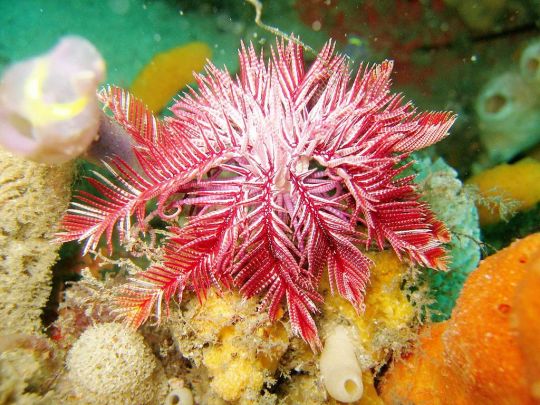
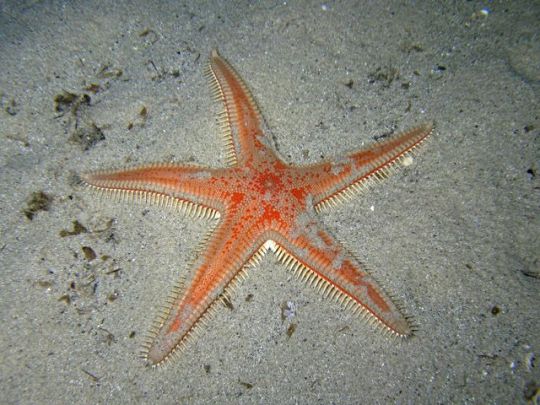
Articulata. This class is made up of sea lilies, which have a stalk an attach themselves to substrate in their adult forms, and feather stars, which are free-moving. They feed using arms with feathery pinnules.
Asteroids. This class is made up of starfish, seabed invertebrates most of which predate on smaller benthic invertebrates. They are capable of regenerating lost limbs.
#animals#biology#polls#poll tournament#zoology#sea lilies#echinoderms#starfish#Articulata#Asteroids#0x5v0x7a
61 notes
·
View notes
Text
Oxalis articulata / Pink Sorrel

via
#Oxalis articulata#Oxalis#Pink Sorrel#Pink wood sorrel#Sorrel#Flowers#Plants#plantblr#plant identification#taxonomy
163 notes
·
View notes
Text

Acetosella rizomatosa (Oxalis articulata Savigny, Oxalidaceae)
(abstract photography)
#photographers on tumblr#digital image processing#original photographs#digital watercolor#Oxalidaceae
26 notes
·
View notes
Text



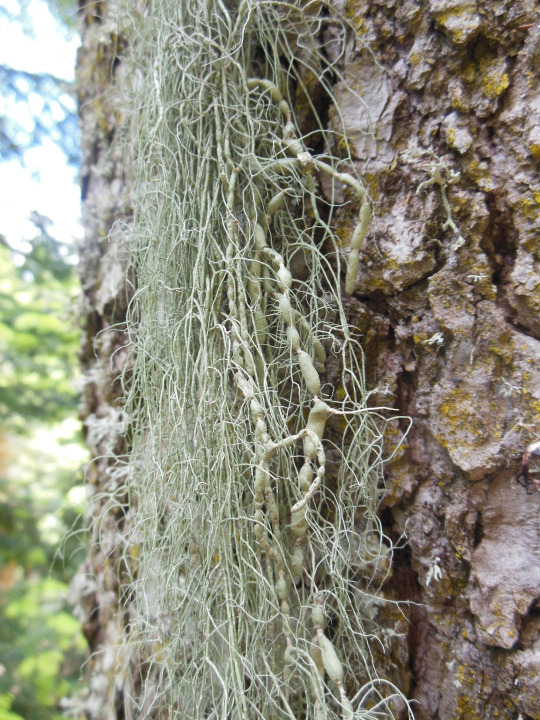
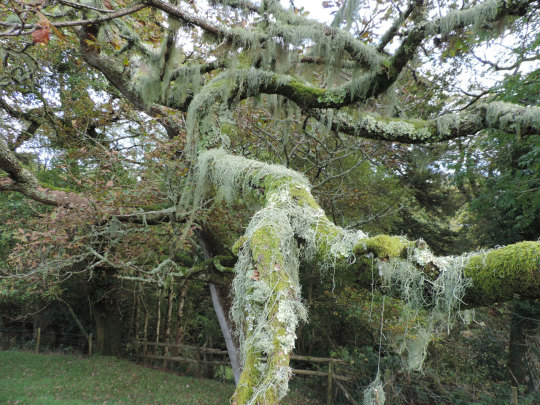
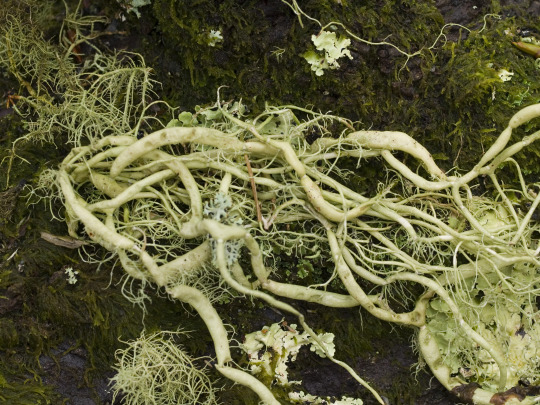


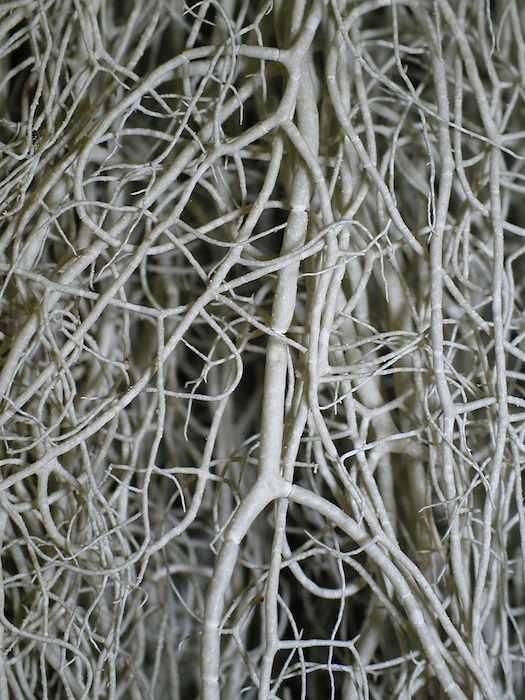
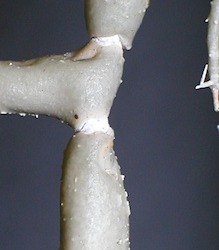

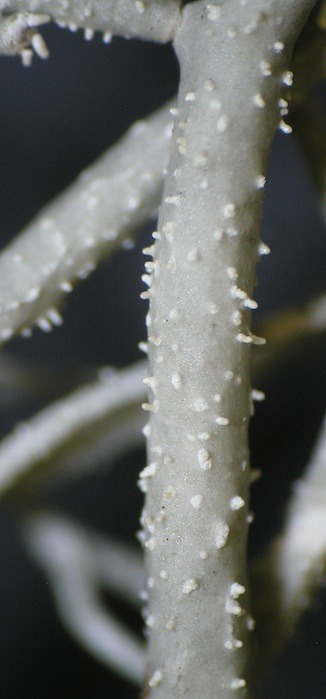
Usnea articulata
String-of-sausage lichen
We often use dichotomous keys to ID lichens, and when trying to ID an Usnea and I get to the section describing a lichen with inflated, sausage shaped lobes, I know exactly which MFer they're talking about--this guy! U. articulata is a fruticose-filamentous lichen that grows in long, beard-like clumps draped over the branches of large, old trees. The surface is greenish gray in color, and can be smooth or covered in short spinules. The stems often become inflated and then constricted, giving them that distinctive string-of-sausages look. Internally, it has a thin, tight cortex, a wide, loose medulla, and a cartilaginous central axis running through the center. This distinctive little weirdy is very sensitive to air pollution, and so has a very limited distribution restricted to old growth forests in isolated regions of Europe, Africa, and Macaronesia. And with urbanization and pollution bungling up its habitat and restricting its range more and more, it is on the IUCN Red List in the UK and Italy.
images: source | source | source | source
info: source | source | source | source
#lichen#lichens#lichenology#lichenologist#fungus#fungi#symbiosis#symbiotic organisms#biology#ecology#mycology#botany#bryology#life science#environmental science#natural science#nature#naturalist#beautiful nature#weird nature#Usnea articulata#Usnea#string-of-sausages lichen#I'm lichen it#lichen a day#daily lichen post#lichen subscribe
208 notes
·
View notes
Text

Pink wood sorrel (oxalis articulata).
#photography#digital photography#original photography#lensblr#photo friday#photographers on tumblr#nature#nature photography#plants#flowers#petals#pink#not kuro#not yoi
21 notes
·
View notes
Text

Oxalis articulata
#photographie#photography#photografy#photographers on tumblr#sun#aestethic#france#nature#original photographers#flower#nikkon#spring#blossom#oxalis
28 notes
·
View notes
Text

芋片喰[Imokatabami] Oxalis articulata
芋[Imo] : Tuber; potato
片喰[Katabami] : Wood sorrel(Oxalis corniculata); also written as 酢漿草
Native to South America. It seems to have introduced in the middle of the Showa period(1926-1989), and has become feral and distributed in many areas today. It is so named because it reproduces by forming tubers. Another name is 節根花片喰[Fushinehanakatabami]. 節根[Fushine] means knotty root, 花 means flower.
A closely related species is 紫片喰[Murasakikatabami](subsp. corymbosa), which is very similar, but this has slightly lighter colored flowers with white anthers and turnip-like rhizome.
In my garden, both of them grow and are flowering now. Their flowers are pretty and I would try to keep a few, but it is not easy to control them because of their fertility.
It is an aside, there is a theory that the vigorous reproductive capacity of Katabami(O. corniculata) was likened to the prosperity of a family, and some family crests were designed with its leaves as a motif. https://commons.wikimedia.org/wiki/File:Marunikenkatabami.png
19 notes
·
View notes
Text
Puppet themed names

First names/nicknames:
Puppet/puppette, pupetta, pupetto, puppettia, puppetine, puppetina, puppetino, puppetio, puppetie/puppety, puppetry/puppetri, puppetelle, puppetella, puppetello, puppetellia, puppetellio, puppeteer, poppet/popet, Pinocchio, pupa, pupilla, poupée, play, punch, pandy, papusa
Marionette/marionnette, manikin/mannequin, moppet, Muppet, marionettist, marioneta, marionetka
String(s), sock, stage, stick, shadow, show, sooty, sifl
Figure, figurine, fantoccino
Glove
Rod
Ventriloquist, ventril, ventrilo
Theater/theatre
Dummy/dummie, dukke
Kermit, kukla
Lamb, loutka
Judy
Olly/Ollie
Andy
Charlie/Charly

Last names:
Puppetmaster, puppeteer, Performa
Marionettist
Strung
Woody, wooden
Articula, articulata
Ventriloquist, ventriloquism
Theatric
Shaddowpuppet, sockpuppet

@doll-hoard @queersrus
Please read the dni in our pinned post before interacting or requesting thank you
#herta speaks#npt ideas#npt blog#npt list#puppetgender#puppet names#puppet theme#puppet themed names#puppet name list#doll names#names#name list#name ideas#name lists#puppets#puppet npts#npt suggestions
19 notes
·
View notes
Text
youtube
Costa is at a magical water garden that he has wanted to visit for years.
Austral Watergardens in Cowan, NSW, sits on 7 acres with views of the Muogamarra nature reserve.
Kevin and Lisa Metelik have been managing the mountain paradise for decades.
Kevin’s grandfather bought the land, set up the water gardens in the 1940s and inspired his daughter to follow in his footsteps; Kevin got the gardening bug from her.
Lisa met and married Kevin and got the bug as well.
Some of the original concrete ponds still exists, with plenty of new ones too, all filled with a range of different water plants. Visitors can choose plants from these stock plants and take them home for their own pond or bowl.
The water is kept clean by finding the right balance of shade and sun, plus native fish to keep down mosquitoes without affecting the frog populations.
Kevin says there are two main groups of water lily: Hardy or European and tropicals.
Hardy or European are the style seen in Monet paintings, with red, pink, yellow and white flowers that sit at water level. They flower earlier, from October to April, and blooms range from miniature to large.
Tropical waterlilies hold their flowers above the water line and are usually fragrant; colours include blues, white, yellow, and pink, and they bloom from December to June in the Sydney area (all year in tropical climates) but may not survive winters in colder areas.
Hardy waterlilies have rhizomes while the tropical ones have bulbs.
Lotus are different again; they are large plants, are revered as sacred in many cultures. The leaves sit above the water and flowers form distinctive seed heads.
Other less obvious but equally useful plants include the native Snakeskin vallisneria, which grows underwater and improves water quality as well as providing habitat for fish and frogs.
Border plants such as jointed twig-rush can tolerate quite deep water.
Red-stemmed thalia gives a tropical look to a pond and is a favourite with frogs.
How to build your own water garden:
A water feature will bring frogs, dragonflies and beauty to a garden, creating a mini oasis. Here are some basic steps to get you started.
Consider the size and depth of a water bowl as well as the material – a lightweight fiberglass or polymer resin makes a large vessel easier to handle. Ceramic bowls may need to be sealed.
The minimum depth is 30cm for water plants; deeper is better. Lisa tries to create three levels in a pond:
* a submerged aquatic plant
* a shallow-water creeper group to grow on the edges
* a tall marginal plant for height
Add in water lilies for flowers and floating leaves; if you can fit two plants, choose one hardy and one tropical species for a longer flowering display.
Put river sand or gravel on top of the soil mix in the pot to avoid muddying the water.
Aim to cover about half to two-third of the water surface with plants.
Add native, tadpole-friendly fish to keep mosquitoes at bay
Filmed on Dharug Country in Cowan, NSW
Featured plants:
Waterlily ‘Escarboucle’ (Nymphaea cv.)
Waterlily ‘Marliacea albida’ (Nymphaea cv.)
Waterlily ‘Blue Triumph’ (Nymphaea cv.)
Sacred Lotus (Nelumbo nucifera)
Snakeskin vallisneria (Vallisneria nana)
Jointed twig-rush (Machaerina articulata syn. Baumea articulata )
* Red-stemmed thalia (Thalia geniculata)
Water milfoil (Myriophyllum ‘Dragonfly’)
* Taro (Colocasia esculenta cv.)
Waterlily ‘Colorado’ (Nymphaea cv.)
Waterlily ‘Green Smoke’ (Nymphaea cv.)
Firetail gudgeon (Hypseleotris galii)
* Always check species before planting: they may be environmental weeds in your area.
#gardening australia#solarpunk#australia#garden#gardening#water garden#ponds#pond#water lily#lotus#plants#Youtube
5 notes
·
View notes
Text
Árboles mediterráneos o de regiones próximas
- Abies alba ( Centro y Sur de de Europa )
- Abies cephalonica ( Sur de Grecia )
- Abies nordmanniana ( Grecia, Cáucaso, Asia Menor )
- Abies pinsapo ( Sierras de Cádiz y Málaga )
- Acer campestre ( Europa, Asia Occidental, Norte de África )
- Acer monspessulanum ( Sur de Europa, Norte de África )
- Aesculus hippocastanum ( Norte de Grecia y Albania )
- Alnus cordata ( Sur de Italia, Córcega e Ischia )
- Alnus glutinosa ( Gran parte de Europa, Asia y Noroeste África )
- Alnus incana ( Europa, llegando hasta el Cáucaso )
- Betula pendula ( Casi toda Europa, Este Asia y Norte de África )
- Carpinus betulus ( Europa y Sureste Asia )
- Castanea sativa ( Parece que su área puede ser en Balcanes, Asia Menor y Cáucaso )
- Cedrus atlantica ( Montañas Norte de África: Marruecos y Argelia )
- Cedrus brevifolia ( Montañas de Chipre )
- Cedrus libani ( Líbano, Siria yTurquía )
- Celtis australis ( Paises del ámbito mediterráneo )
- Ceratonia siliqua ( Difícil origen, parece que en Arabia y Siria )
- Cercis siliquastrum ( Mediterráneo Oriental )
- Crataegus laevigata ( Europa, Norte de África, Oeste de Asia )
- Crataegus monogyna ( Europa, Asia y Norte de África )
- Cupressus sempervirens ( Se supone nativo del Mediterráneo Oriental: Irán, Chipre, Siria )
- Eleagnus angustifolia ( Oeste de Asia y naturalizado en el Sur Europa )
- Fagus sylvatica ( Área extensa del Centro y Oeste de Europa desde Penín. Ibérica a Polonia )
- Ficus carica ( Este del Mediterráneo, hasta el Oeste de Asia )
- Fraxinus angustifolia ( Mediterráneo Occidental y Norte de África )
- Fraxinus excelsior ( Toda Europa y llega a Asia Menor )
- Fraxinus ornus ( Sur de Europa y Asia Menor )
- Juglans regia ( Al parecer procede del Sureste Europa y Oeste Asia )
- Laburnum anagyroides ( Centro y Sur de Europa )
- Olea europaea ( Mediterráneo Oriental y Asia Menor, probablemente )
- Ostrya carpinifolia ( Sureste Europa, hasta el Cáucaso y Asia Menor )
- Phoenix canariensis ( Islas Canarias )
- Phoenix dactylifera ( Norte de África y Oeste Asia )
- Phoenix theophrasti ( Creta y en algunas zonas de Turquía )
- Pinus halepensis ( Región Mediterránea )
- Pinus nigra ( Área muy extensa Europa llegando Turquía )
- Pinus pinaster ( Paises del Mediterráneo Occidental y costas atlánticas Francia y Portugal )
- Pinus pinea ( Región Mediterránea )
- Pinus sylvestris ( Área muy extensa por Europa y Asia )
- Platanus orientalis ( Sureste Europa y próximo Oriente )
- Populus alba ( Europa, Oeste de Asia y Norte de África )
- Populus nigra ( Casi toda Europa y Suroeste de Asia )
- Populus tremula ( Amplia Europa, Norte de África, Norte de Asia )
- Prunus avium ( Casi toda Europa, Asia Menor y Norte de África )
- Prunus domestica ( Europa y Oeste de Asia )
- Prunus dulcis ( Oeste de Asia, asilvestrado en Cáucaso y Grecia )
- Prunus laurocerasus ( Europa, Este de Persia )
- Prunus lusitanica ( Península Ibérica )
- Quercus canariensis ( Mediterráneo Occidental, Sur de Portugal, Suroeste y Noroeste España y Norte de África )
- Quercus coccifera ( Región Mediterránea )
- Quercus faginea ( Península Ibérica y Norte de África )
- Quercus ilex ( Región Mediterránea )
- Quercus robur ( Casi toda Europa )
- Quercus suber ( Mediterráneo Occidental )
- Salix alba ( Casi toda Europa, Norte de África y Norte y Centro de Asia )
- Salix pedicellata ( Ámbito Mediterráneo )
- Taxus baccata ( Casi toda Europa, Área Mediterráneo y Asia Menor )
- Tetraclinis articulata ( Norte de África y Malta. En Cartagena y Murcia hay una pequeña población autóctona )
- Ulmus glabra (oriunda de casi toda Europa y parte de Asia )
- Ulmus minor ( nativa Europa, Norte de África y Sureste Asia )
- Ziziphus jujuba ( nativa del Sureste Europa hasta China )
#dua lipa#árbol mediterráneo 🔥🦋🔥#positivity#music#streaming#bb#art#education#elquecortaelhielo#books & libraries
2 notes
·
View notes
Text
Clade overview: Ecdysozoa!

The eight last phyla we've seen - from corset-bearers to velvet worms - are all ecdysozoans, one of the most diverse branches of the animal tree of life.
The clade was only recognized recently, in the 1990s, and based on molecular data. Despite this, they are united by one key morphological characteristic: a cuticle that is shed as the animal grows, through a process called moulting or ecdysis. An hormone called ecdysone is injected beneath the old cuticle, acting as a fluid pushing it outside while a new cuticle grows underneath.
Historically, this similarity wasn't recognized as uniting these phyla into a clade. Instead, arthropods were, because of their superficially similar segmented bodies, united with annelids in the clade Articulata, with velvet worms believed to be a transitional form between them. The lack of coelom (an internal body cavity) in some ecdysozoans was seen as too unsurmontable an obstacle to unite them with the arthropods.
Recent discoveries have brought to light more characters uniting ecdysozoans, although later lost in some phyla. Rings and plates surrounding the mouth, known in priapulids, were also discovered in basal arthropods, while the discovery of a Cambrian stem-group relative shows that a proboscis and a finely ringed cuticle might also be ancestral to the group.

26 notes
·
View notes
Text
Taxonomy Tournament: Invertibrates


Articulata. This class is made up of sea lilies, which have a stalk an attach themselves to substrate in their adult forms, and feather stars, which are free-moving. They feed using arms with feathery pinnules.
C. elegans. This nematode species is commonly used as a model organism, being the first multi-cellular organism to have its genome sequenced and neural connections mapped
#animals#biology#polls#poll tournament#zoology#Animal Tournament Round 4#sea lilies#echinoderms#nematodes#worms#ecdytes#Articulata#C. elegans#0x14v0x15
41 notes
·
View notes
Text

Pink Sorrel (Oxalis articulata)
Sintra/Portugal (23/11/2023)
[Nikon D850; AF 105mm Micro-Nikkor F2,8 with Circular Flash Nissin MF 18; 1/250s; F16; 400 ISO]
19 notes
·
View notes
Text
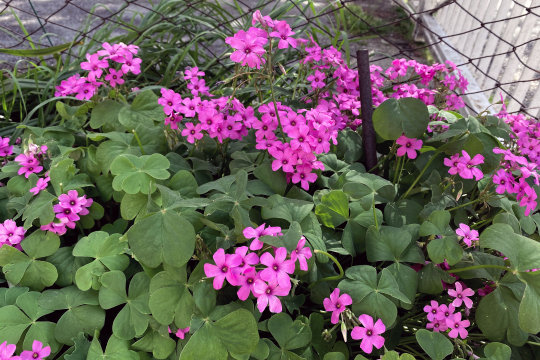
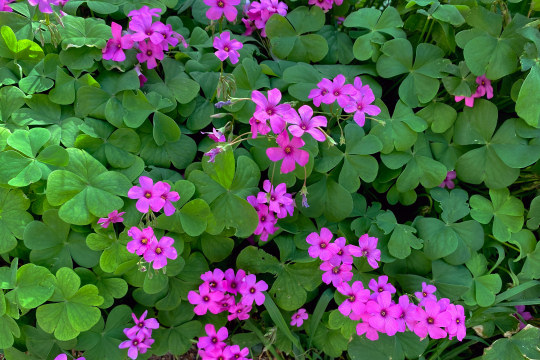
Oxalis articulata Savigny – Acetosella rizomatosa (Oxalidaceae), nel parcheggio
20 notes
·
View notes
Text
Animal spotlight!
Starting off with a personal favourite, we have the cloak-and-dagger bees, genus Thyreus! I'd love to say they're my favourites because they're exceptionally interesting but it is mainly because I find them very cute and beautiful :3 I am not immune. Thyreus histrionicus (David Marquina Reyes) and Thyreus himalayensis (marcelfinlay on iNaturalist)
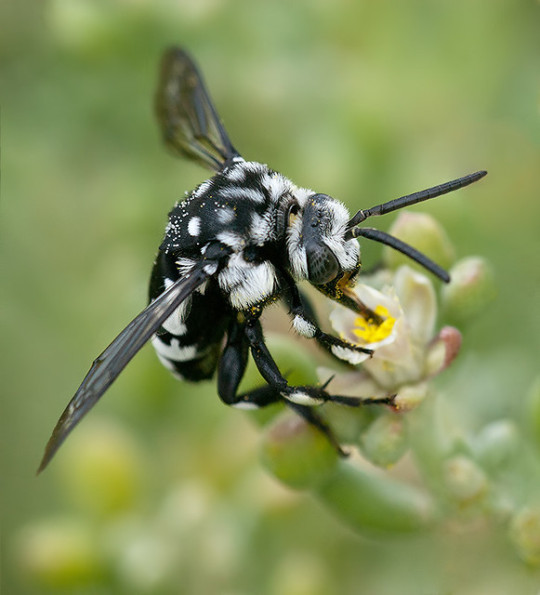

They are kleptoparasites, meaning that they lay their eggs in other bees' nests so their larvae can feed on pollen collected for the host's larvae, much like a cuckoo (lending various kleptoparasitic bees the title of cuckoo bees). They also often kill and eat their new nestmates.
One of my favourite things about them is their roosting behaviour. They sleep attached to twigs or dead plants by the mandibles! This isn't exclusive to the genus, many solitary bees sleep this way, particularly males. Here, two histrionic cloak-and-dagger bees can be seen roosting alongside some white-banded digger bees, Amegilla quadrifasciata (a species that they parasitise!). Image by David Marquina Reyes

And here is an articulated nomad bee (Nomada articulata, another cuckoo bee) doing the same! Image by jerremie on iNaturalist
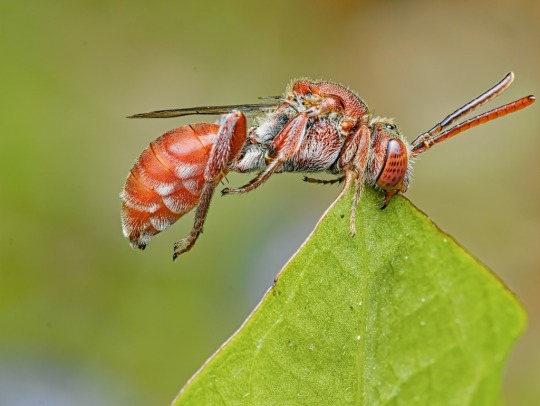
4 notes
·
View notes
Text
#1932 - Oxalis articulata - Shamrock Oxalis

Photo by @purrdence in Waipukurau, NZ. Unfortunately it’s another introduced weed.
AKA Oxalis floribunda, Oxalis purpurata, Chari amilo (Nepal), Netho (khatta) saag (India), bent wood-sorrel, bent woodsorrel, jointed woodsorrel, oxalis, pink oxalis, pink sorrel, pink wood sorrel, pink-sorrel, shamrock, and sourgrass.
Originally native to Brazil, Argentina, Paraguay and Uruguay but now naturalised in many parts of the world including SE Australia. It was introduced to Europe as an ornamental, but is eaten for the Vitamin C content in parts of India, and elsewhere as a groundcover that uses allopathic leachates to suppress the growth of other plants.
Vulnerable to the rust fungus Puccinia oxalidis.
4 notes
·
View notes